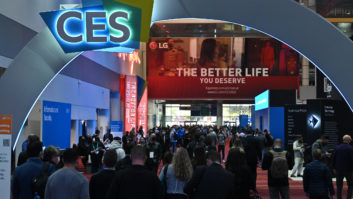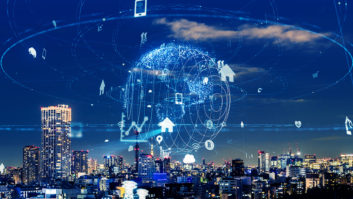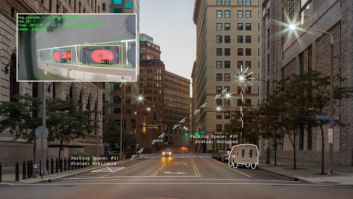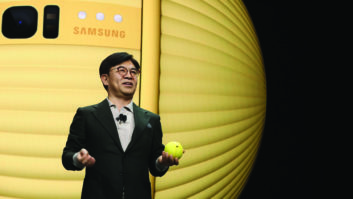You can be forgiven if your first reaction to hearing the term “smart cities” is an eye roll. Really? Sure, we have smart diapers, smart toothbrushes and smart faucets, but cities? How is that even possible?
While the word is a bit amorphous, there’s no question that smart cities are a thing and an important one at that. Cities are the locus of much of the world’s population and economic activity. By 2050, a full 66 percent of the world is expected to reside in one, according to the United Nations.
Get this kind of CE coverage all year long — subscribe to the free TWICE eNewsletter.
What smart cities do, in a nutshell, is use technology make those cities better places to live.
“We characterize a smart city by the use of technology to address issues of sustainability, economic development and citizen well being,” said Eric Woods, research director at Navigant Research. A smart city embraces technology across every level of government — from transportation to energy, security and environment–and changes how citizens interact with their government and their surroundings, Woods added.
In 2016, the research firm Juniper identified Singapore, Barcelona, London, San Francisco and Oslo as cities at the forefront of the migration to smart technology. But there are hundreds if not thousands of smart city projects underway in both the industrial and the developing world, according to Dominique Bonte, VP of research at ABI Research. Economies are largely centered in cities so addressing the challenges faced by these swelling metropolises is the key to future economic growth, Bonte said. In fact, Bonte notes that cities that embrace the smart city paradigm can see between 2 to 5 percent of additional GDP growth.
Enabling Technology
There are a multitude of interlocking technologies that combine to create a smart city. Many of those are Internet of Things (IoT) devices like Internet-connected street lamps, surveillance cameras, sensors that monitor air quality and trackers that monitor government vehicles, said Stephanie Atkinson, founder and CEO of Compass Intelligence. These IoT devices communicate over 3G and 4G networks but also tri-band Wi-Fi and Bluetooth. As 5G networks gradually roll out, with ample bandwidth for a multitude of connected devices, smart city technology deployments are expected to accelerate.
See also: The Good & The Bad Of Smart Cities
The best way to think about a smart city isn’t to think about an individual piece of technology, but multiple pieces working together harmoniously, Bonte said. In Amsterdam, for instance, air quality monitors dictate traffic patterns around schools, Bonte said. If the air around a school degrades, traffic is automatically rerouted away from the school until it improves.
In a smart city, conventional infrastructure is either retrofitted or rebuilt to multitask. Take the light pole, a staple in every city. Many cities are in the process of converting their street lights to energy efficient LEDs, yes, but in a smart city, they can do so much more. In Karlsruhe, Germany, city lamp posts were given a complete technological makeover as part of a pilot program between the local energy provider and the software firm SAP. These lamp posts now provide free public Wi-Fi, an emergency button to allow citizens to quickly reach police, a charging port for electric vehicles and environmental sensors such as particulate sensors to monitor air quality. These street lights are networked and can communicate with other IoT devices, say in cars, to alert drivers to open electric charging ports. They’re also equipped with radar to monitor traffic patterns and send that information to city officials.
In Sydney, Australia, the traffic lights have sensors that detect vehicle and pedestrian presence and adjust the timing of traffic lights to minimize congestion. The system can prioritize public vehicles, like busses, to make sure street lights stay green to allow for a smoother rush-hour commute.
Smart cities also change how citizens interact with their government, Atkinson said. “A lot of this ties back to the web and to mobile devices,” she said. Everything from how citizens access government services, make payments and learn about community events is being digitized.
TMI Meet AI
The lifeblood of a smart city is the data generated by its multitude of connected devices. Ingesting, organizing, analyzing and acting on this data is going to be a major focus of the next wave of smart city development, Bonte predicted. While there are analytical tools in place to manage this flood of big data today, analysts like Woods and Bonte see artificial intelligence playing an increasingly important role in augmenting human judgement and management of this data.
Artificial intelligence techniques such as machine learning and neural networks have already proven to be powerful analyzers of city data. Marek Bardonski, managing partner at the AI and data science consultancy Sigmoidal, demonstrated that a neural network could be trained on traffic patterns significantly faster than the typical computer simulations currently used to model traffic. Looking ahead, these neural networks can be used to predict traffic patterns and then communicate to street lights to head off potential congestion before it even starts.
In a slightly more Orwellian turn, the many surveillance cameras around a city will benefit from machine vision and facial recognition algorithms to not simply passively record video, but to recognize individuals in it and to understand the action that’s unfolding. Variants of this technology have already been deployed in Moscow and in numerous cities across China. (Fun fact: in the Chinese city of Jinan, city officials are using cameras equipped with facial recognition to name and shame jaywalkers.)
It will be some time before cities fully embrace AI, Atkinson said, particularly because government agencies tend to hoard data rather than share it.
Woods agreed. “There’s great potential for AI and machine learning on the large data sets” produced by smart city infrastructure. But for those who fear an imminent AI takeover, Woods said not to worry. “Cities won’t be run by AI anytime soon.”












